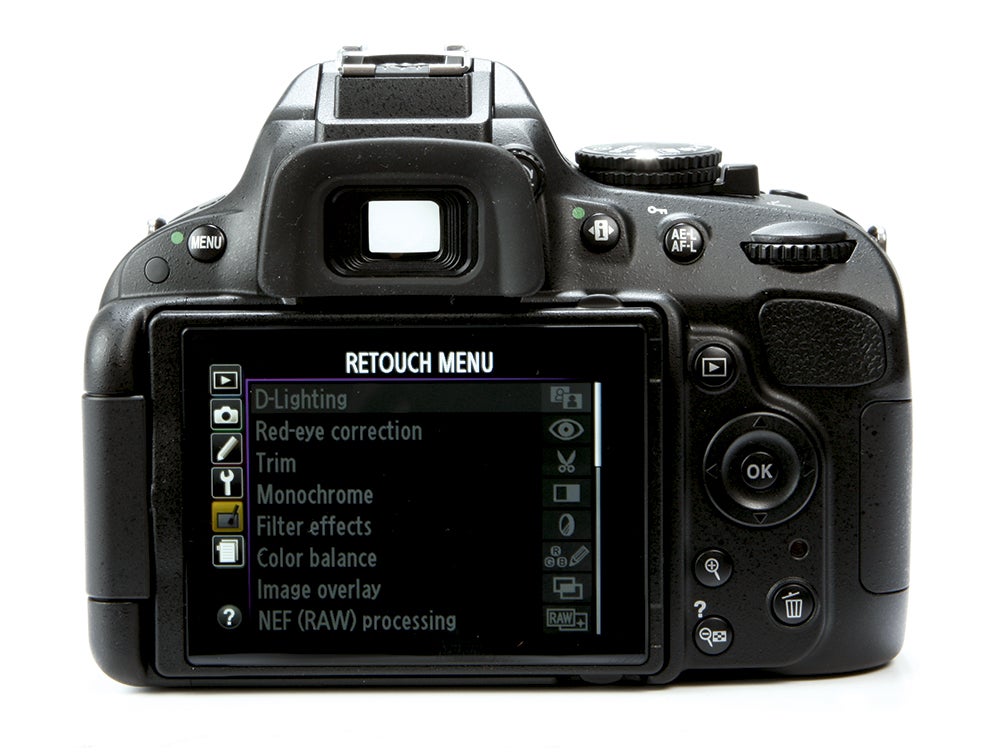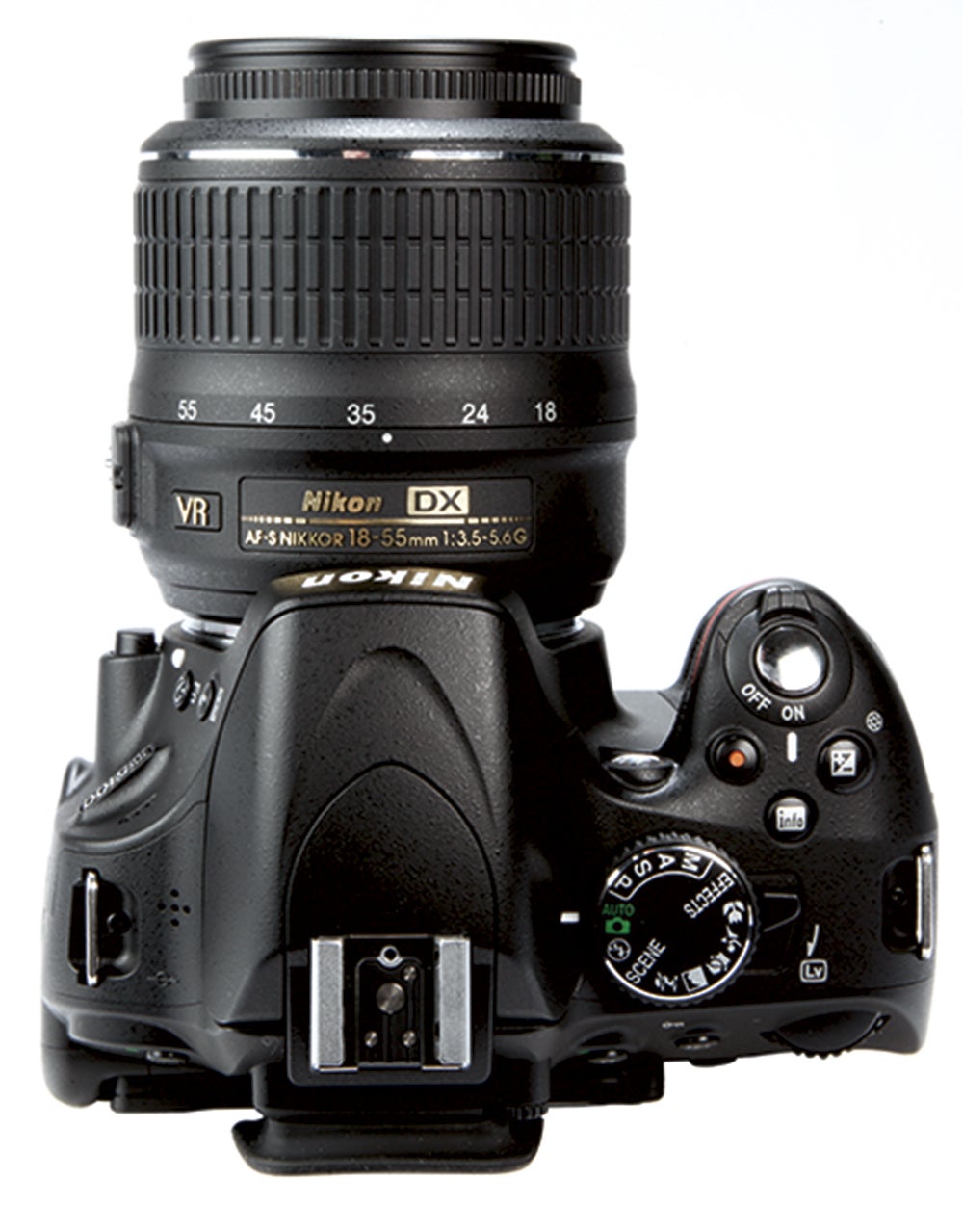When Matt Golowczynski decided to travel around the world, he ditched his pro gear and opted for a modest second-hand Nikon D5100. Here’s what he made of it
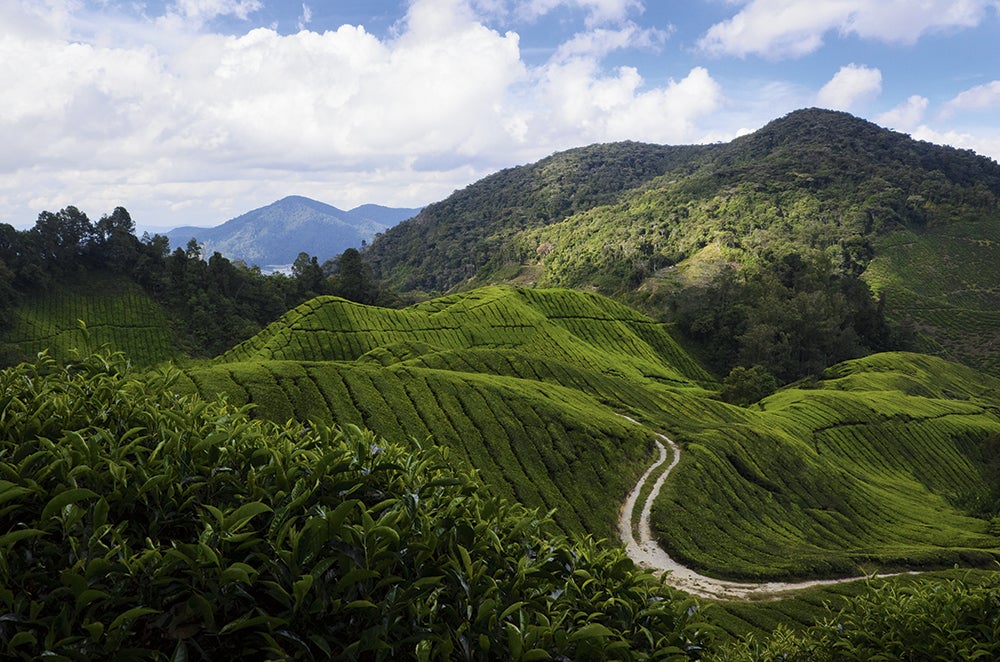
I captured this image of the Cameron Highlands in Malaysia spontaneously from a vehicle, using less-than-ideal exposure settings, so there’s some noise and diffraction visible at 100%. Nikon D5100, 16mm, 1/80sec at f/14 and +0.33EV, ISO 800
Nikon D5100 at a glance:
- 16.2-million-pixel, CMOS sensor
- Single-lens reflex viewfinder
- ISO 100-25,600 (extended)
- 3in, 9.21-million-dot, vari-angle LCD screen
- 1,920×1,080p HD video mode
- 560g (with battery and memory card)
- 128x97x79mm
- Price: £150-£250 second-hand (the D5100 was updated by Nikon to the D5200 in 2012)
Back in 2013, I decided that if I were ever to follow though with my plans to go on a round-the-world trip I probably ought to do it sooner rather than later. I was approaching my thirties and knew that if I only got round to it later in life, I’d probably still enjoy the experience but it wouldn’t be quite the same. I resolved to save enough money to travel the world on a comfortable backpacker’s budget and started to plan where to go and what I needed. The main necessity before I finally left in May this year: a new camera.
I had recently upgraded my four-year-old Nikon D700 to a D750, but I knew this wasn’t a realistic travel companion. As appealing as it might be to have a full-frame body in tow, it was a pricey and heavy bit of kit to carry to all corners of the world, and the need to take full-frame glass would only burden me further. I realised that a small DSLR or compact system camera would probably be a more fitting option, plus one or two optics that would together cover most eventualities.
I considered a multitude of different bodies, from the Pentax K-50 and Nikon D3200 to the Fujifilm X-M1 and Olympus OM-D E-M5. However, at every turn my choice was complicated by the availability of a suitable optic, one which would need to deliver more than a standard kit lens and that would be within my modest, but accommodating, budget. I then started to wonder whether the longer zoom and more modern advances inside a bridge camera, such as the Sony Cyber-shot DSC-RX10, would be a better option, but eventually decided against it.
I realised fairly early on that I didn’t want to be without a viewfinder, which was already ruling out a number of CSCs, while an articulated screen of some kind was also on the wish list. As a Nikon user, the possibility of using some of my existing lenses was also beginning to bias my preferences. After trawling through a number of shops, comparing what I could get new or second-hand, I found a model that ticked more boxes than most: the Nikon D5100.
Despite it being a fairly junior four-year-old model, its specs held up well against more recent DSLRs. Its sensitivity can be adjusted up to a setting equivalent to ISO 25,600, while the screen has a decent 9.21-million-dot resolution and full HD video is on offer too. I was also comforted by the fact that it shared its sensor with the one inside the more senior D7000.
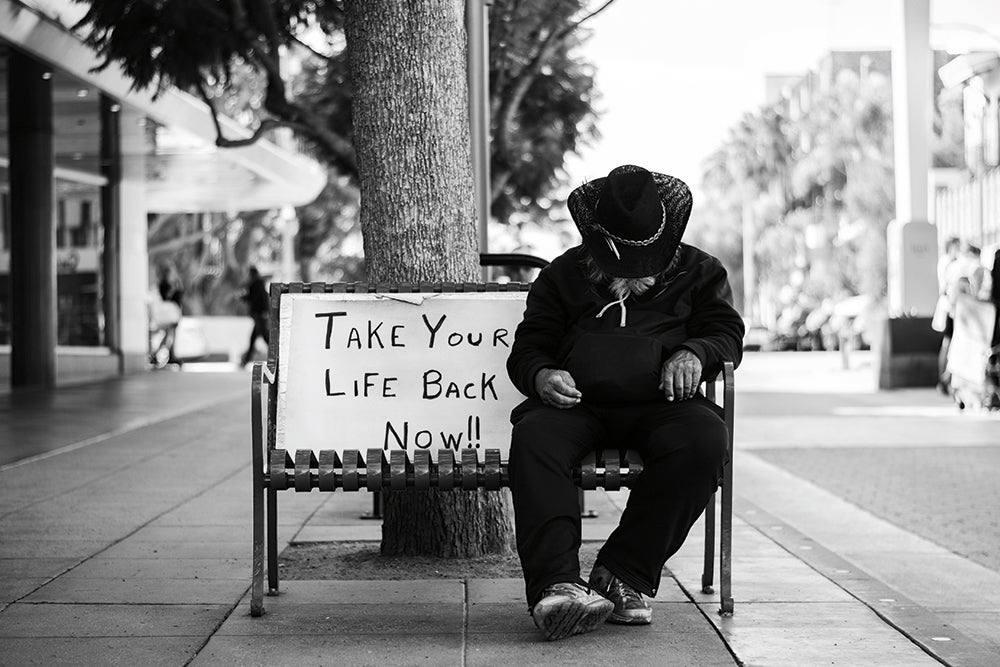
The D5100’s APS-C sensor and 50mm f/1.8 lens produced a depth of field that suited street shots, like this image taken in California, USA. Nikon D5100, 50mm, 1/1250sec at f/2, ISO 100
Prior to my trip I’d noticed the more taxing demands of the Nikon D750’s 24MP sensor over the 12MP one in my old D700 model, particularly with wide-aperture softness. So it was somewhat refreshing to be shooting at a more forgiving 16.2MP.
Furthermore, although the sensor is APS-C size, I knew much of the noise-related benefits of a full-frame alternative would be largely cancelled out by me typically shooting during the day with plenty of light.
Coming from the D750, the fairly standard 11-point AF system and 95% viewfinder coverage were the concessions I noticed first, while the camera’s 4fps burst mode is fine but hardly noteworthy. I did wonder whether I’d made a mistake not going for a weather-resistant model, but I figured I probably wouldn’t be taking too many photos while it was raining, and that it would be easier to simply use some sort of protection rather than let this factor alone influence my camera choice.
While searching for a body I managed to find the lens I’d been looking for in a similarly good condition, the Nikon AF-S DX Nikkor 16-85mm f/3.5-5.6G VR ED. I also traded in my old AF 50mm f/1.8D for the AF-S 50mm f/1.8G version, as the f/1.8D would fail to autofocus on the motorless D5100. Thanks to buying second-hand, various discounts and trading in my 50mm lens, the total came to about £450 – so roughly the same price as a current model with a basic 18-55mm kit lens.
I updated the firmware of both the camera and 16-85mm lens and, with a desire to travel as light as possible, supplemented my kit with just a few essentials. A handful of SD cards and a weather-resistant case in which to store them; a GorillaPod for long exposures and night shots; a circular polariser to deal with reflections and make the most of blue skies; a spare battery for my DSLR; and Nikon’s AH-4 handstrap, all packed into a small, discreet shoulder bag alongside my iPad mini and Ricoh GR.
My route would see me first visit a handful of countries in central Europe, before I continued to south-east Asia and then south to the east coast of Australia. After this I’d fly to the west coast of the USA and continue on land until I reached my final destination, New York. The whole trip would take around three months – perhaps less time than most people would allow for such a journey, but long enough to spend a good five or six days in most capital cities and key destinations.
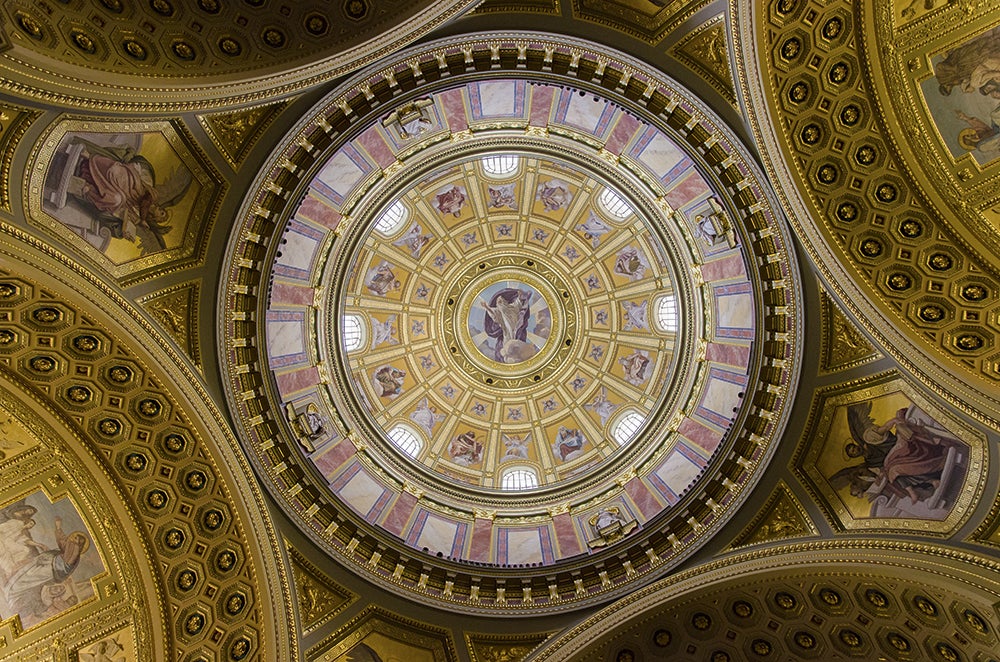
Post-processing eliminated noise in this shot of a cathedral in Hungary. Nikon D5100, 16mm, 1/50sec at f/5, ISO 1,600
Although it met many of the requirements I had when I was choosing camera, the D5100 wasn’t a camera I took to straight away. The grip is shallower than what I’m used to and I found certain buttons were too small and awkwardly positioned around the body for comfort. Still, after a week or so in Europe, repetitive use was making me more accustomed to where everything was and how best to access it, and I also customised a couple of controls. By this point, I was also starting to appreciate the camera’s image-capturing tendencies well enough to make certain permanent changes. I found, for example, that the camera’s ‘vivid’ colour mode saturated colours nicely without being too heavy-handed, so I left this on as standard.
Europe was coming into summer and I was shooting a lot in harsh sunlight, so I also applied +0.3EV to the camera’s exposure-compensation system to offset any minor metering issues and to bring a little more detail in shadow areas. This was something I found the camera managed to do without robbing highlights of their details. Shooting raw and JPEG files simultaneously, I balanced this with the camera’s Active D-Lighting settings for JPEGs, which proved to be useful when capturing the wide dynamic ranges of the many grand churches I visited.
Sights and lighting
Churches were perhaps the first major obstacle for the camera. I realised early on that the peripheral focusing points weren’t always sensitive enough to latch on to details in sub-optimum light, so I tended to stick to the central, cross-type point. I was also concerned that shooting at high sensitivities in these kinds of conditions would introduce too much noise into images, and while it was definitely visible it appeared to be cleaned up without too much bother in post-processing. Saying this, I don’t think I ever called upon the camera’s extended sensitivities as only a few cameras can be expected to perform reasonably well in darker conditions at settings equivalent to ISO 25,600.
While the camera’s maximum shutter speed of 1/4000sec is perfectly respectable for a model of the D5100’s class, it did create issues when trying to use a wide aperture in brighter conditions. I found that perfectly usable results could be obtained by rectifying minor overexposure with the camera’s raw-processing options, which says something about its dynamic range. Now and again, things like this would make me think about the advantages of compact system cameras, whose electronic shutters would not only be able to extend this into five-figure territory but could also be programmed to be near-silent (useful in places of worship). Based on my experience of quiet shutter modes on DSLRs, the two don’t really compare. The D5100’s clunky menu pad didn’t really help here, either, as it meant options couldn’t be changed as discreetly as I would have hoped.
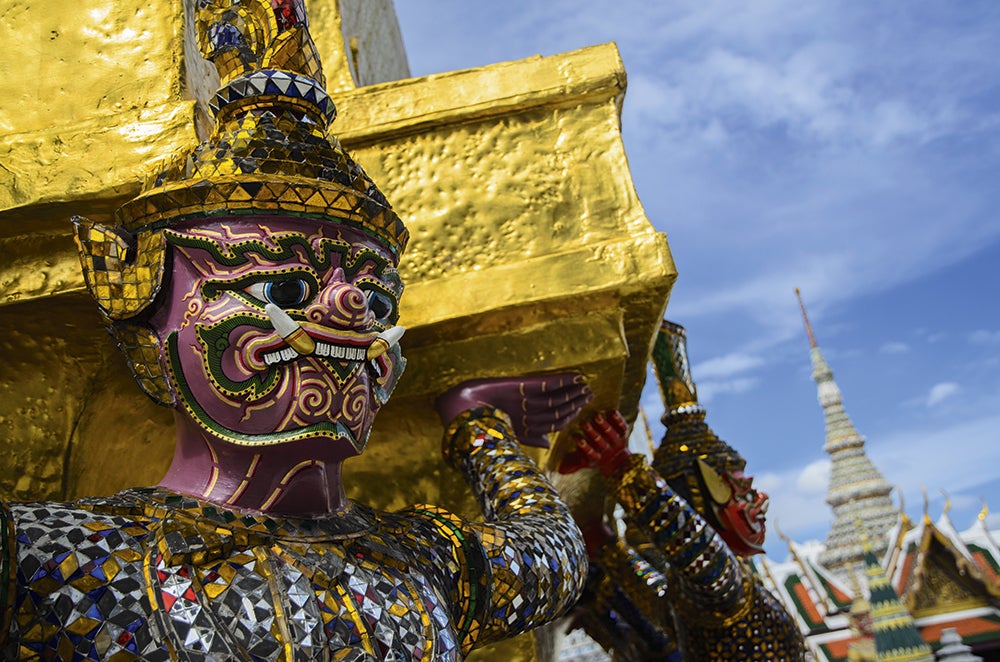
The ‘vivid’ picture control saturated colours of the Grand Palace in Bangkok, Thailand, nicely without making them too garish . Nikon D5100, 24mm, 1/320sec at f/4 and +0.33EV, ISO 100
I did, however, discover a few neat features along the way that enabled me to get the images I wanted in tricky situations. One of these was the ability to set the self-timer to a 20-second delay. During a hike around Australia’s Blue Mountains, this allowed me to mount the camera on a barrier and run down a flight of steps to take a photo of myself with the mountains as a backdrop. The camera does have a tendency to assume you want a particular feature activated for only a single frame, however, and resets itself after the image is captured.
I was satisfied with the two optics I chose to bring with me and found they suited most situations. There was a little distortion at the wideangle end of the AF-S DX 16-85mm f/3.5-5.6G ED VR lens, but the camera managed to deal with this well. And while something a little longer would have been handy in certain situations, I knew this would come at the expense of size or cost.
The 75mm effective focal length from mounting the 50mm lens on a DX-format body is a little longer than the classic lengths normally associated with reportage, although I found this to be a great combination when out on the street, as it allowed me to keep a good working distance from subjects and remain inconspicuous. The small size of the two lenses also helped and, with the strap wrapped around my hand, I was able to react quickly. The combination of the two also worked brilliantly for portraiture, being suitable for close-up headshots while also being wide enough for more environmental portraits.
I did call upon the camera’s video-recording function from time to time, but the basic controls on the body highlighted how much it was designed with only causal movie shooting in mind. It was great to be able to use the camera’s timelapse feature when capturing Vienna’s Wiener Riesenrad (giant wheel) in Austria and when shooting from a couple of Prague’s towers in the Czech Republic, although, out of convenience, I tended to rely on my smaller Ricoh GR for this.
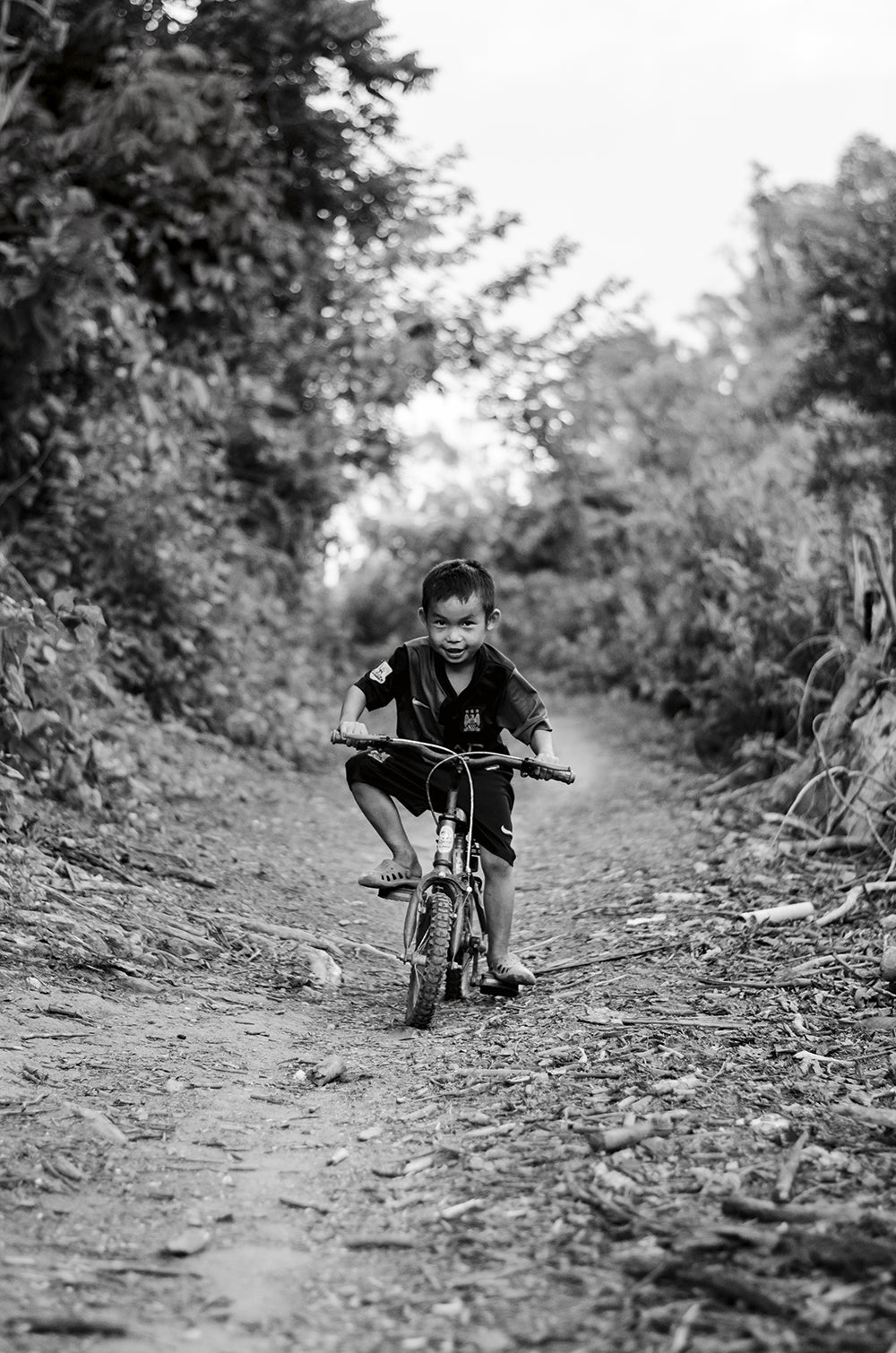
The 4fps burst mode may not be particularly fast, but the 1/4000sec maximum shutter speed and central sensitive AF point helped to capture this boy in action in Thailand . Nikon D5100, 50mm, 1/2000sec at f/1.8 and +0.67EV, ISO 800
As someone who tries to shoot carefully before processing raw files on my computer, I’d never really seen the need to call upon a camera’s retouching options. In my experience, manufacturers seem to fill these menus with what I (and no doubt many others) consider gimmicks. But it seems I may have judged these too quickly, as I found a number of the D5100’s processing options to be genuinely useful. With only an iPad mini to handle basic post-processing tasks, any steps I could take in-camera would make my life easier later.
The ability to make minor adjustments to an image’s straightness was a great timesaver, while the cropping option helped to both cut away peripheral details and refine composition. There’s also the option to resize images, which had obvious advantages when transferring to my iPad and uploading online. Ultimately, not only did I embrace these options, but I also started wishing for more advanced versions of each, although I appreciate there’s only so much you could reasonably expect on an entry-level model such as the D5100.
While I wouldn’t say I felt limited overall by the kit I had, any limitations I did have – focal lengths, aperture and so on – had the effect of making me better appreciate certain photographic principles. The need to achieve a shallower depth of field when set to my widest aperture, for example, made me reconsider my position relative to a subject and the background. Similarly, instead of simply reaching for the higher end of the camera’s sensitivity range in low light, I looked for ways in which I could support myself so I wouldn’t need to go this high. Without the luxury of a full-frame sensor and a constant f/2.8 aperture, there was something refreshing about needing to push myself as a photographer.
Final thoughts
Photographing with the D5100 on an almost daily basis for three months made me learn a lot more about myself as a photographer. It highlighted a handful of bad habits I’d fallen into and gave me a perfect opportunity to start correcting them, and within the first few weeks I felt like I was becoming more disciplined in my approach. I found I didn’t give up on an opportunity as easily, nor fall back on the idea that I’d done a good enough job and that I could fix whatever needed to be fixed in post-processing.
Had this been a purely photographic trip I would probably have made more effort to wake up early and be out shooting at the best times to do so, but my priority was to experience new places first and photograph them second. Too often I would arrive somewhere new and start shooting before I fully appreciated what I was actually seeing. I suppose this is just the photographer’s instinct, but I do feel it takes something away from experiencing a place for the first time.
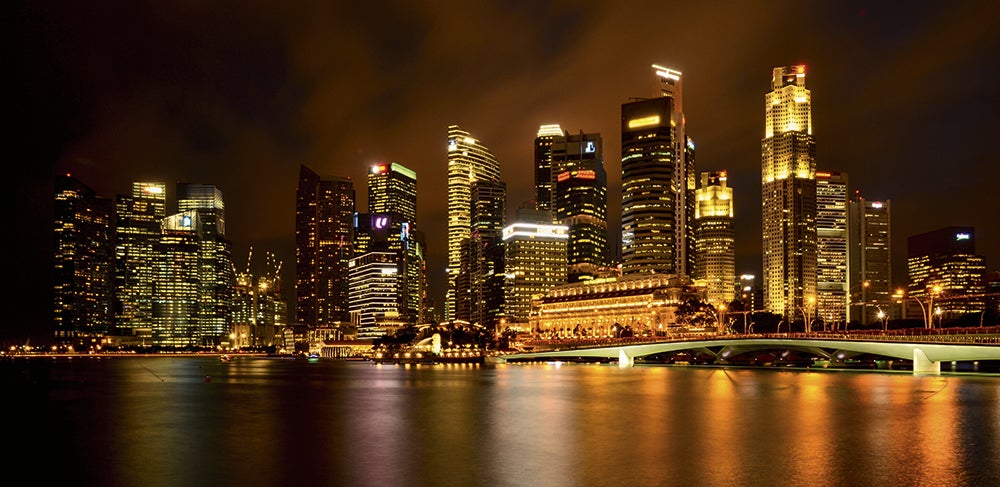
Despite the slight overexposure to lift shadow detail in this image of Singapore’s skyline, highlights don’t appear to have blown too much detail. Nikon D5100, 16mm, 30secs at f/13 +0.67EV, ISO 100
Being in a certain place for a few days meant I didn’t have the luxury of being everywhere I wanted to be at the ideal time, and there were certain images I wanted to take that, for one reason or another, just weren’t possible – a panorama of the Golden Gate Bridge in San Francisco, California, against a clean blue sky, for example, or some of the colourful Thai temples I stumbled upon on a cloudy day. I realised, however, that this was probably a blessing in disguise as it meant I approached a subject differently and ended up with less obvious images I wouldn’t have otherwise thought to take.
I always thought I’d probably sell the D5100 when I got back to the UK but, being so used to it and so familiar with its capabilities, I see no reason why it shouldn’t be my go-to camera for any trips out of London. While it’s certainly the case that I could have taken slightly different images with a full-frame body, the D5100’s light weight and ability to be carried virtually everywhere I went meant it also enabled a few I might have otherwise missed.
Using the D5100 so extensively reminded me that, while more advanced models may provide a more pleasant shooting experience, in terms of capturing images it’s really down to you rather than the camera. (And basic models really are sufficient when the shooting conditions are in your favour). It’s probably the oldest and most obvious photographic cliché, but it’s a cliché for good reason.
You often hear it said that everyone who shoots with a digital camera should, at some point, shoot a few rolls of film in order to better discipline themselves and develop more of an appreciation for the role of light in creating images. After this trip, I’ve begun to realise that many people would no doubt likewise benefit from some time shooting with a model many notches down from what they’re used to.
Interval timer
Back when I was still using a Canon EOS 5D Mark II, I remember having to buy a separate remote release when I started getting into timelapse shooting. I was, therefore, pleased to find Nikon offering an interval timer as standard on what is clearly a far more junior model.
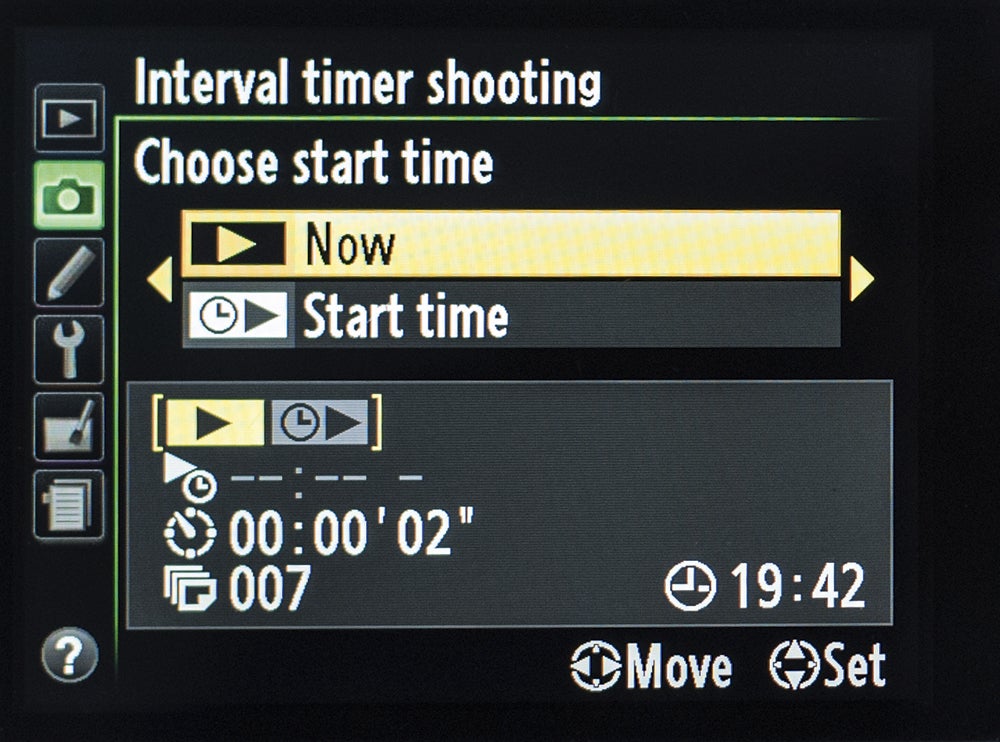 The functionality on offer here is pretty straightforward: you just select the interval between each exposure down to a second and how many exposures you want in total (up to 999 frames), and the camera starts shooting. You can even delay the start of shooting if you need to, although I had no need for this.
The functionality on offer here is pretty straightforward: you just select the interval between each exposure down to a second and how many exposures you want in total (up to 999 frames), and the camera starts shooting. You can even delay the start of shooting if you need to, although I had no need for this.
The camera doesn’t stitch these images together into a single movie, so you have to do this yourself later using a computer and the right processing software. Thankfully, the process is fairly straightforward with a program such as QuickTime Pro.
I’m aware the functionality has moved on in recent models, and what’s offered on the D5100 does look somewhat primitive by comparison. There’s no exposure smoothing to even out exposures as there is on the D5500 and D750, for example, nor the option to pause shooting once you’ve started. Instead, you have to turn the camera off and on again if you want to stop it mid-way through.
Furthermore, as the length of the final movie is partly determined by its frame rate, the camera can’t tell you how long it will be nor when it will finish capturing images, but this isn’t difficult to calculate if you know your output frame rate. Most of these options are more niceties than necessities, and it’s still possible to create decent timelapse footage.
Nikon D5100 – Focal points
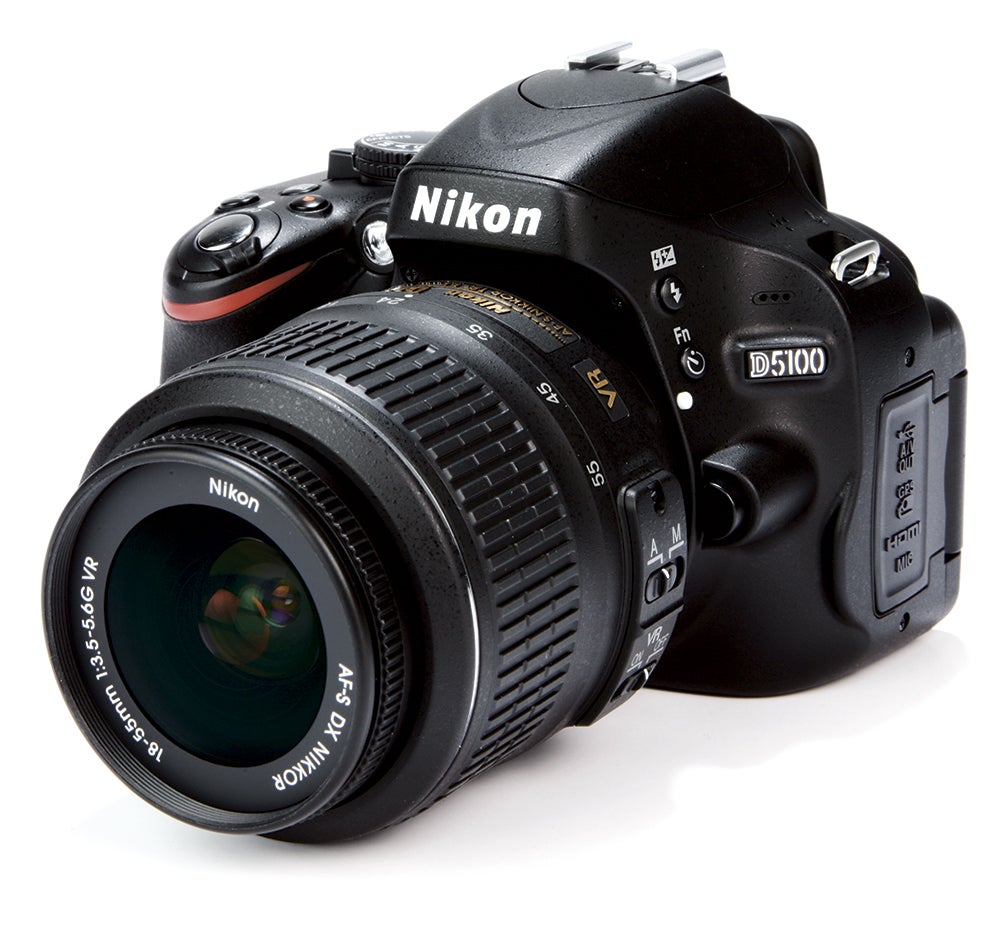 It may be a fairly basic model, but the Nikon D5100 has some useful features built in.
It may be a fairly basic model, but the Nikon D5100 has some useful features built in.
Timer/function button
A button accesses the camera’s timer function next to the flash, although I assigned the sensitivity option to this instead as the camera doesn’t have a physical control for it. As this fell quite easily to my left thumb, I was able to change it quickly where necessary.
Interval timer
Somewhat basic in its functionality but fun to use, this feature allows you to take up to 999 images at an interval of your choosing, with the intention of stitching the images into a single timelapse movie using software afterwards.
Effects
You can choose from one of seven effects for instant processing styles like ‘miniature’ and ‘color sketch’. It’s also possible to apply certain options to images once they are captured. They’re probably not for everyone – more an occasional guilty pleasure.
Active D-Lighting
This optional, but effective, feature can be used to light shadows, tame highlights and lessen midtone contrast. It can be set to one of four strengths – low, normal, high and extra high – or alternatively set to auto.
Articulated screen
This was one of the key points on my wish list and it was useful to be able to protect it by folding
it to face the camera’s body. Ironically, I managed to scratch it soon after I returned to the UK.





